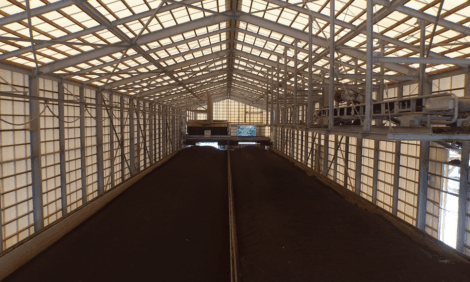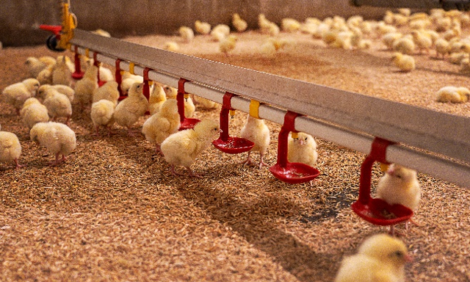



Small Flock Series: Incubation of Poultry
By Jesse J. Lyons, Department of Animal Sciences, Missouri State University - Hatching eggs - watching an egg turn into a baby chick — is a learning experience for students of all ages as well as a practical way for you to start a small poultry flock. The incubation process is relatively simple, though it may not seem so at first, once you learn the procedures and techniques involved.Brooding requirements
Incubation procedures for other common farm poultry species such as turkeys and waterfowl are similar to those for chickens; however, there are differences in incubation times and optimum conditions. This publication focuses on care of incubating chicken eggs.
A successful hatch depends on many factors. Good-quality, fresh, fertile eggs and vigorous embryos maintained in a nurturing environment are all elements. Eggs are available from many sources; however, not all sources supply top-quality eggs, and many commercial hatcheries ship only large orders. This publication covers the basics of incubating a small number of eggs, primarily for small flocks or for classroom teaching projects.
Egg handling and storage
The embryo of a fertile egg starts the cell-division process as the egg passes through the warm oviduct of the hen that lays it. The embryo is alive. See Table 1 for the sequence of development of the chick embryo. This development is suspended when the egg cools. For this reason it is important to cool hatching eggs to a temperature between 45 and 55 degrees F as soon as possible after they are laid. Humidity should be about 70 to 75 percent. Common household refrigerators are far too cold for storing fertile eggs. Refrigerators are usually set at between 40 and 45 degrees, and eggs will hatch poorly if placed in these conditions.
| Before egg laying | Fertilization. Division and growth of living cells. Segregation of cells into groups of special function (tissues). |
| Between laying and incubation | No-growth stage of inactive embryonic life. (50,000 to 80,000 cells) |
| During incubation | |
| Day 1 | |
| 16 hours | First sign of resemblance to a chick embryo |
| 18 hours | Appearance of alimentary tract |
| 20 hours | Appearance of vertebral column |
| 21 hours | Beginning of formation of nervous system |
| 22 hours | Beginning of formation of head |
| 24 hours | Beginning of formation of the eye |
| Day 2 | |
| 25 hours | Beginning of formation of heart |
| 35 hours | Beginning of formation of ear |
| 42 hours | Heart begins to beat |
| Day 3 | |
| 60 hours | Beginning of formation of nose |
| 62 hours | Beginning of formation of legs |
| 64 hours | Beginning of formation of wings |
| Day 4 | Beginning of formation of tongue |
| Day 5 | Beginning of formation of permanent organs and differentiation of sex; Aortic structure begins forming and thickening |
| Day 6 | Beginning of formation of beak |
| Day 8 | Beginning of formation of feathers |
| Day 10 | Beginning of hardening of beak |
| Day 13 | Appearance of scales and claws |
| Day 14 | Embryo gets into position to break the shell |
| Day 16 | Scales, claws, and beak become firm |
| Day 17 | Beak turns toward air cell |
| Day 19 | Yolk begins to enter body cavity |
| Day 20 | Yolk sac completely drawn into body cavity. Embryo occupies practically all the space within the egg except the air cell |
| Day 21 | Hatching of chick |
| NOTE: Event listing adapted from Cornell Extension Bulletin 205 | |
Select eggs for hatching that are normal in size, shape, color and shell texture. Excessively large or small eggs are often infertile; do not set these eggs. Remove eggs with obvious defects, dirt and cracks. Pack hatching eggs large end up. Keep them cool. For best hatching results, never store fertile eggs more than two weeks. Eggs hatch best if set within three to four days after laying. Older fertile eggs will hatch satisfactorily if properly stored.
Avoid subjecting hatching eggs to rapid temperature changes or fluctuating temperatures. Place eggs in a suitable storage environment and remove them only before setting. If eggs are kept in cool storage for more than one week, the eggs should be rocked or propped for a period of time leaning to one side and then rocked to lean toward the other side for a period of time to allow the egg contents to move about and not become stuck to the shell.
Sweating occurs when cool eggs are exposed to a sudden increase in environmental temperature or relative humidity. This moisture promotes growth of microorganisms on the shell surface and should be avoided. Microorganisms can be drawn into the egg through shell pores if the egg cools and the contents contract, causing a decrease in internal pressure. Table 2 lists temperatures and relative humidities at which eggs will sweat if they have an internal temperature of 55 or 65 degrees. Microorganisms may cause a poor hatch and even egg spoilage.
Further Information
To read the full report, please click here
Source: Published by University of Missouri Extension - Updated September 2004









